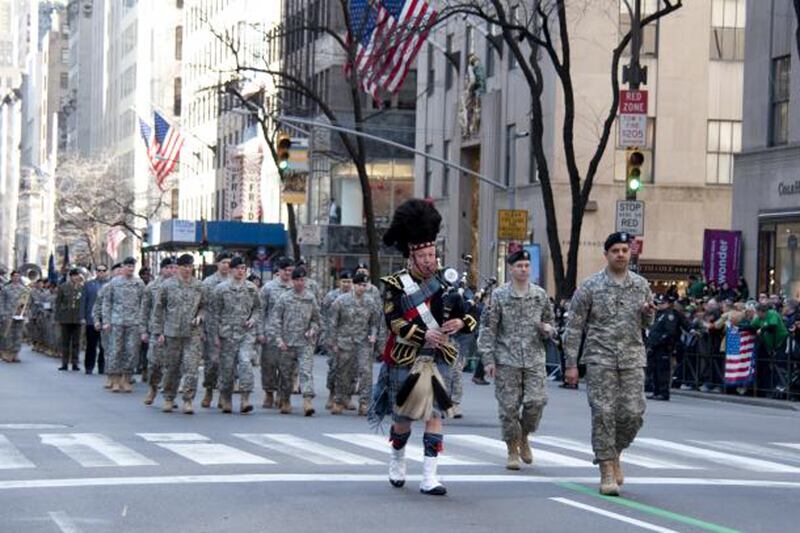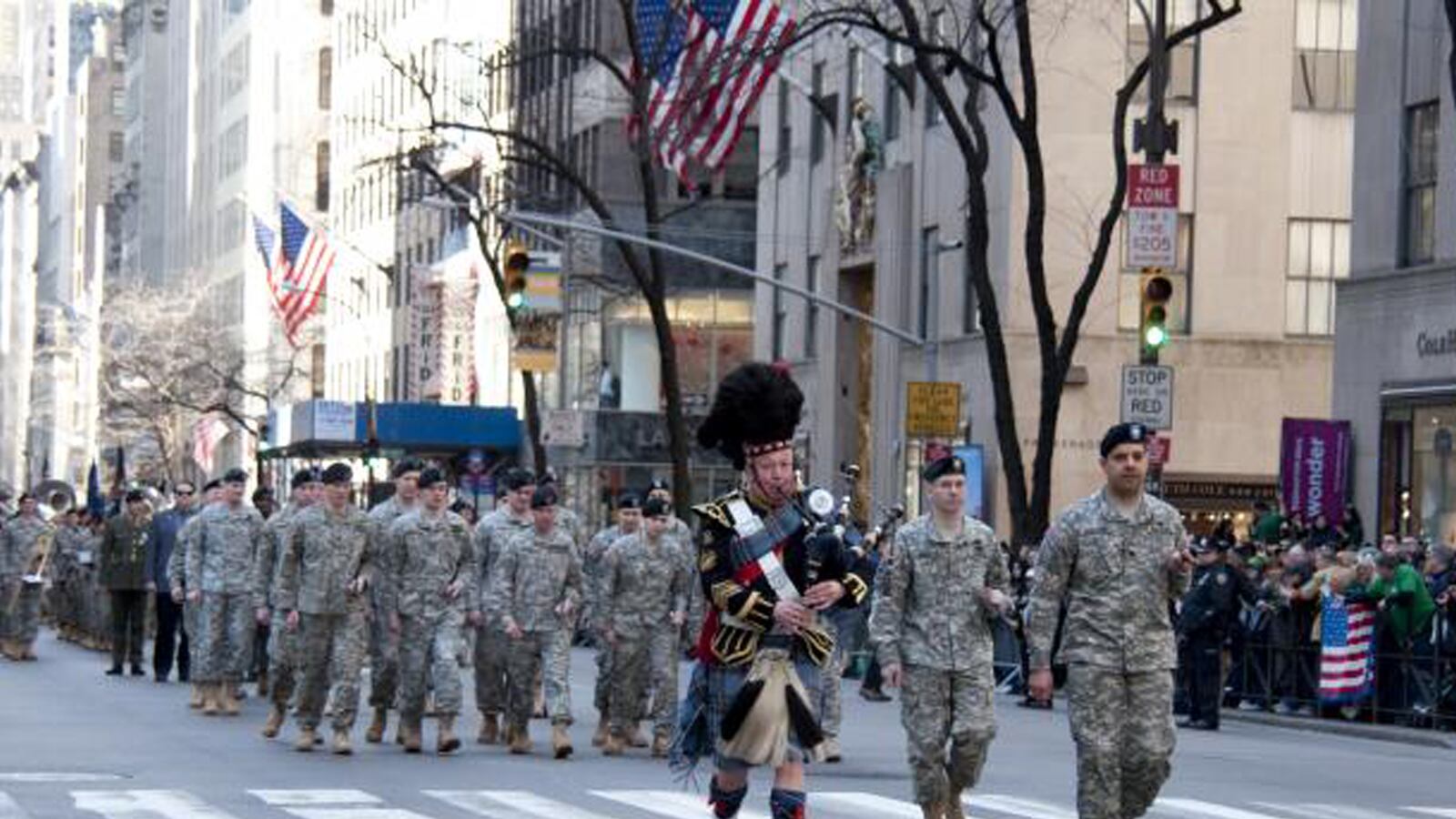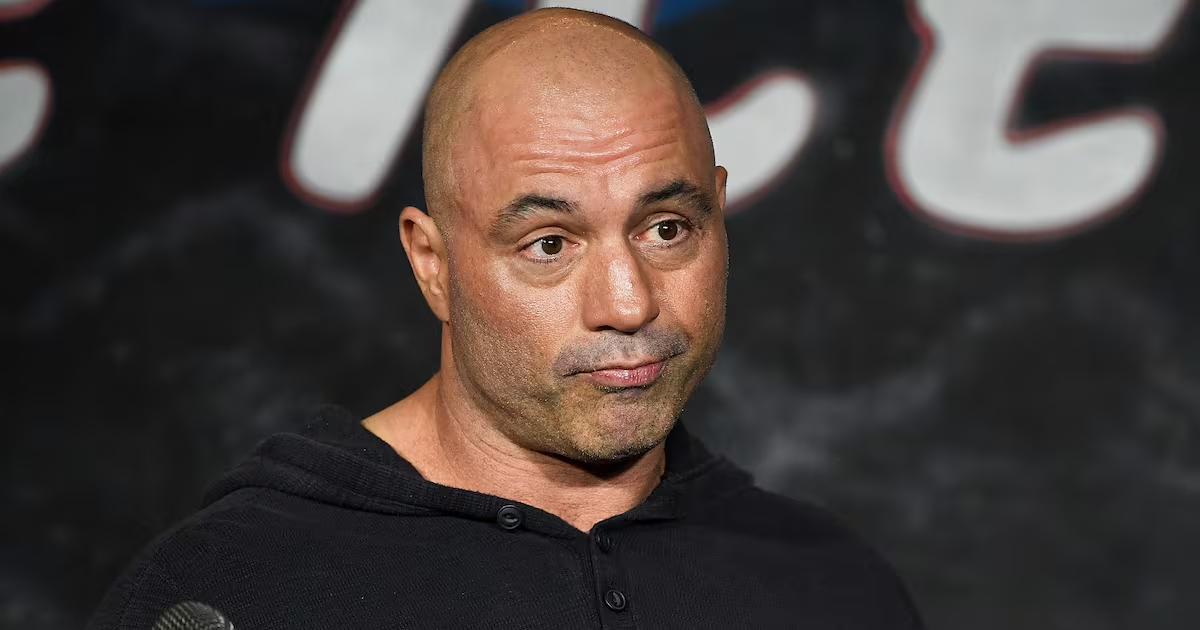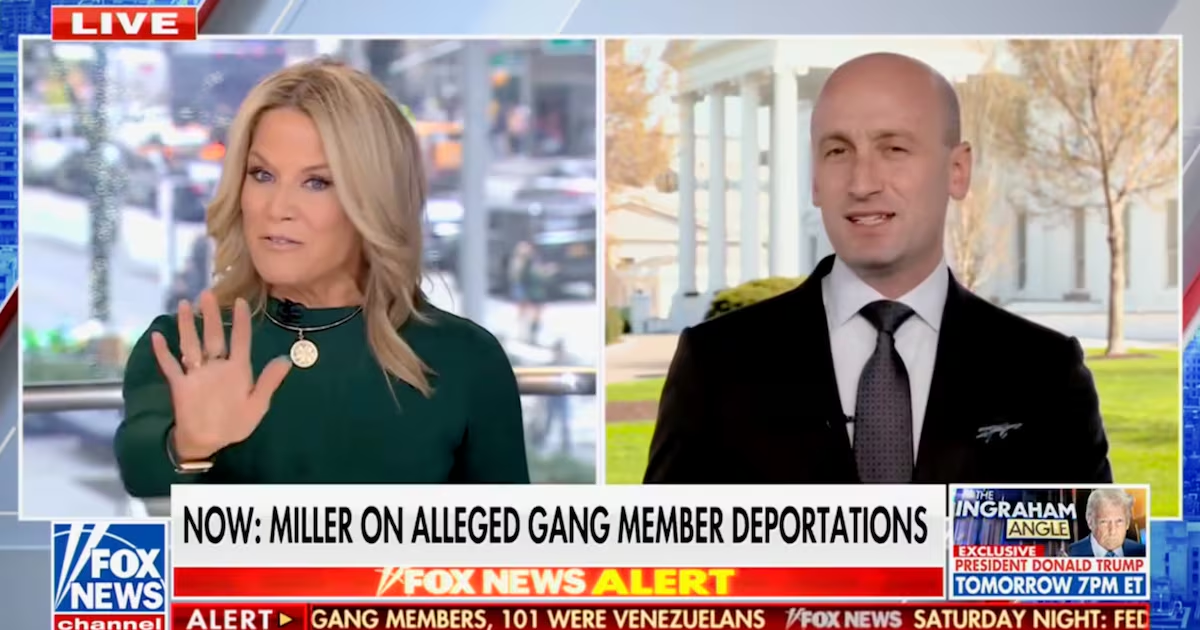Legend has it that when the 69th Infantry Regiment first led New York’s St. Patrick’s day parade in the 1850s, soldiers marched with bayonets fixed to their loaded rifles. The militiamen of the “Fighting Irish,” as the 69th came to be known, were ready to protect their fellow marchers from the know nothings (think Bill the Butcher from Gangs of New York), violent nativists who vilified the Irish as an immigrant plague.

A lot has changed since those days. Gone are the “No Blacks, No Irish, No Dogs” signs, and while the fighting 69th remains an immigrant unit, the Rodriguez’s now outnumber the O’Malleys. Some traditions remain, though. A Gaelic greeting is used for the unit motto and Irish wolfhounds march ahead of soldiers as sentinels in the St. Patrick’s Day parade, which the 69th Infantry Regiment (a unit I served in off and on from 2005-2011) will lead as it has done every year since 1851.
These days, the Russians and Dominicans who wear the 69th unit crest are Irish by association, partakers in a proud American tradition of ethnic mixing and cultural invention that has been perfected in New York. It’s the best of both worlds, soldiers in the 69th can hold onto their own family’s traditions (and food) while adopting the unit’s Irish lore as their own.
Before Notre Dame adopted the moniker, the 69th was the original “Fighting Irish,” a name bestowed for the unit’s bravery in the Civil War.
Like many immigrant stories, the Fighting 69th was born out of loss and exile. Leaders of a failed rebellion against British rule fled Ireland in 1848 because it was illegal under British law to speak the native language, or conduct military training. They arrived on the shores of New York to join its large Irish immigrant community. “The Irish Republican movement really moved from Dublin to New York City,” says Colonel John Tierney, a former officer in the 69th and now the unit’s regimental historian.
Once in New York, the Young Irelanders, as the leaders of the rebellion were called, formed independent Irish militias that could be mobilized to fight in future battles against England. As Tierney tells it, “The leaders who were not captured or killed came to New York and helped form the three Irish regiments that are the early lineage of the 69th.”
In 1851, the volunteer Irish Brigade was officially incorporated into the New York State Militia and designated the 69th Infantry Regiment. Even after it was brought under the state of New York, the immigrant volunteers of the 69th maintained their commitment to the Irish republican cause.
In 1860, the commander of the 69th, Michael Corcoran, was imprisoned when he refused to lead the regiment in a parade honoring the visiting Prince of Wales. Corcoran’s protest of British subjugation and the Irish famine led him to the stockade.
Corcoran remained imprisoned awaiting court martial until the assault on Fort Sumter in April of 1861 when the Civil War began and charges were dropped so he could lead the men of the 69th onto the battlefield at Bull Run.
For the 69th, the Civil War ended the preoccupation with the fight in Ireland and marked the beginning of the unit’s sacrifice for its new home.
At Bull Run, Gettysburg, Antietam, and Appomattox, where the unit stood for General Lee’s surrender, and in countless battles across the United States, the 69th fought to preserve the union. Suffering one of the highest death rates of any Union outfit in the war, the 69th established a reputation for fierceness and valor that earned it the names the “Fighting 69th” and “Fighting Irish” that have been preserved by every generation of its combat veterans through to the present day.
Of the Irish Soldiers fighting at Fredericksburg, General Lee wrote:
“Never were men so brave. They ennobled their race by their gallantry on that desperate occasion. Though totally routed, they reaped harvests of glory. Their brilliant though hopeless assaults on our lines excited the hearty applause of our officers and men.”
In the 20th century, the 69th fought in both World Wars but after the 1950s came to see itself, along with the rest of the Army National Guard, as a worst case scenario reserve force that would only be called into action again for a dire emergency.
Then the war in Iraq began.
Colonel Sean Flynn, the current commander of the 69th, deployed with them to Iraq and wrote a book called “The Fighting 69th From Ground Zero to Baghdad” about the modern history of the unit. Flynn returned from Afghanistan (where I served with him) in 2012, and recently took command of the 69th during a pivotal anniversary for the unit.
It was 10 years ago, in 2004, when the 69th received its alert order to begin preparing to go to Iraq. According to Flynn, that marked the end of the National Guard as a strategic reserve force that would only be used in a massive third world war scenario.
“We mobilized and went away as the third or fourth string on the bench,” Flynn says. “When we came back, we were the second string and on a predictable calendar to rotate in and out of combat.”
Nineteen soldiers from the 69th’s Task Force Wolfhound were killed during the unit’s year-long deployment to Iraq in 2004. In 2008, four more members of the 69th were killed when the unit sent 300 soldiers to Afghanistan. In the 69th armory there’s a wall honoring those who have died, with their names inscribed below their images. Today, as the soldiers of the 69th gather in the armory after the parade, they will remember the fallen in their own way.
Through the sacrifices in Iraq and Afghanistan, the 69th has grown in size and reputation. When new privates now arrive, even their most junior leaders are likely to be combat veterans.
“The 69th and the National Guard in general are the best they’ve ever been,” Flynn says. “Particularly the NCO corps [the corps of sergeants who fill most of the Army’s leadership roles – ed.] have an incredible amount of veteran experience.”
Flynn is now focusing on a “new critical period, the post-war transition of the National Guard, which is now a very seasoned and veteran fighting force. We’re on the cusp of a new era and can leverage all this combat experience for a higher level of operational readiness going forward.”
In regards to the unit’s current makeup, Flynn says, “We used to be all Irish, but we were always an immigrant battalion. Well, we’re still an immigrant battalion; 25 percent, a full quarter of our soldiers, were born in another country. The overwhelming majority of the rest of the battalion is first generation or second generation at most. We are loaded with soldiers, who are seeking—actively going after—the American dream.”





